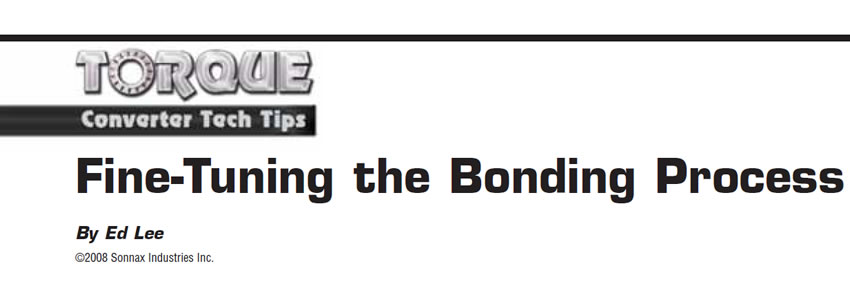What Is the Correct Name? Part II
In 1955 the automotive industry finally standardized the shift quadrant on all vehicles. From that time forward, all shifters would read from left to right (or front to back) and the order would be: Park, Reverse and Neutral, followed by the Drive ranges.
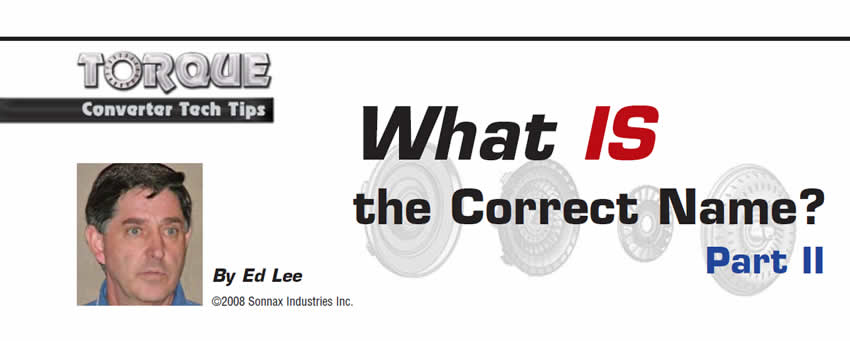
What IS the Correct Name?
When you are ordering torque-converter parts from your supplier, it is important to be able to communicate your wants and needs to your salesperson. Frustrations run high on both sides when the purchaser asks for and receives a clutch when his intention was to buy a friction ring.
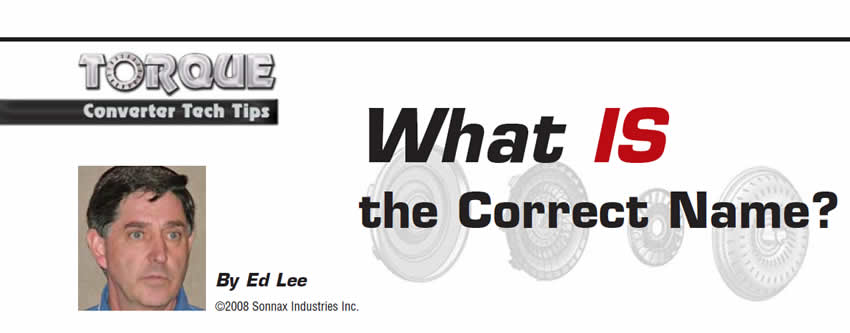
Internal Clearance
“Internal clearance” is the space between the impeller and the turbine in an assembled torque converter (Figure 1).
Hydraulically, it is the distance that the oil travels from where it exits the vanes of the impeller to where it enters the vanes of the turbine. Some rebuilders use the term “internal clearance” incorrectly. They use it to refer to the clearance between the internally stacked components of the converter. The correct term for the clearance between the stacked components is “end play.”
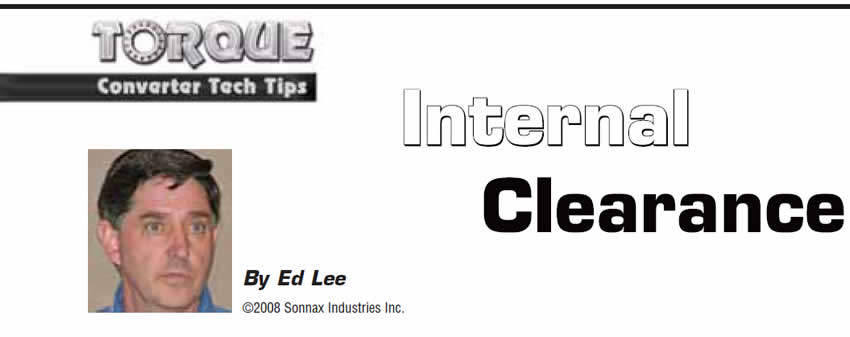
Mystery P0741 Code
A 2003 Ford F-350 4X4 was brought to a transmission shop in Eugene, Ore. The customer complaint was an intermittent P0741 code. The code did not seem to occur when the vehicle was driven locally but happened every time it was taken on a longer trip. The customer also noticed that the code would set whenever any additional load was placed on the vehicle. The additional loads included traveling in hilly terrain or pulling a trailer.
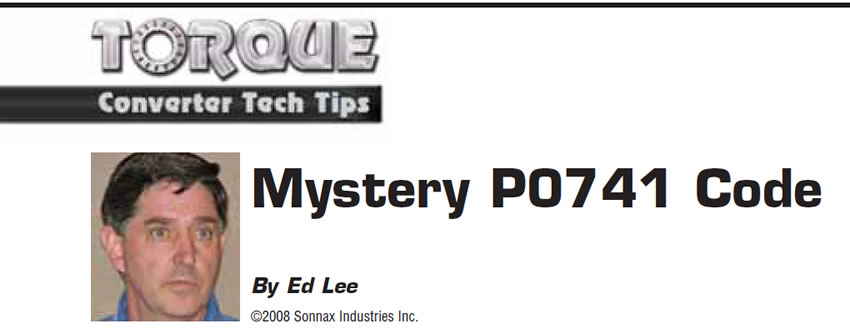
TCC Apply
The debate about whether to use a grooved or smooth friction lining to rebuild a converter originally equipped with a grooved lining has been going on since the day grooved linings first arrived at torque-converter shops. Those advocating a grooved replacement lining always seemed to have the upper hand because they used the very strong argument that “it is the same as OE.”
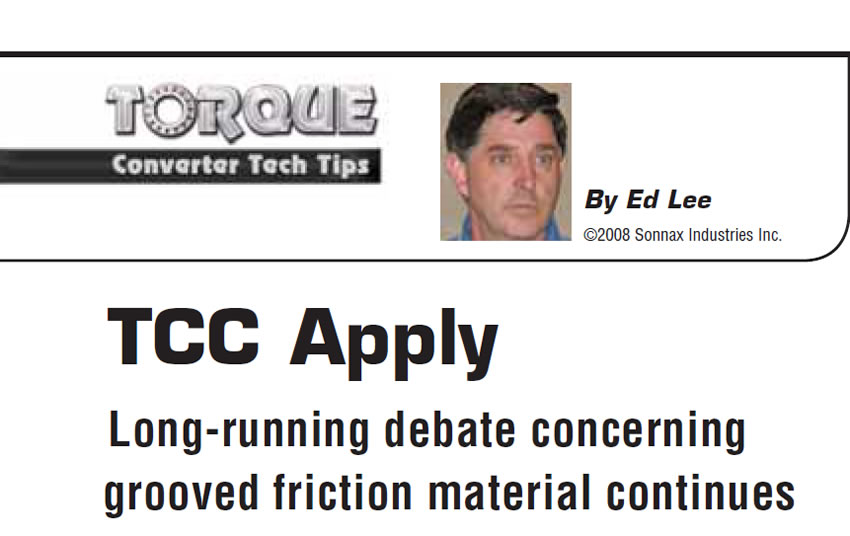
More Centerline Issues
Maintaining the proper centerline during the torque-converter rebuild process is very important. How well the centerline was maintained during the process can be measured by how much balance weight needs to be added at the end of the process.

Centerline Issues: TCC Frictions Bonded Off Center
For several decades the importance of the torque-converter centerline has been hammered home by Don Randolph of DACCO Inc. Don’s sentiments on this subject have been echoed by the torque-converter original-equipment manufacturers (OEMs). In fact, every OEM torque-converter print starts with a true axial centerline, which serves as the reference point for all axial measurements.

Blame the Torque Converter, Part 2
Last month, in Part I of “Blame the Torque Converter,” a 2001 Volkswagen Jetta and a 2002 Toyota Tundra were both thought to have faulty torque converters. Both vehicles had TCC-related trouble codes (the Jetta had a 740 code and the Tundra had a 770 code).
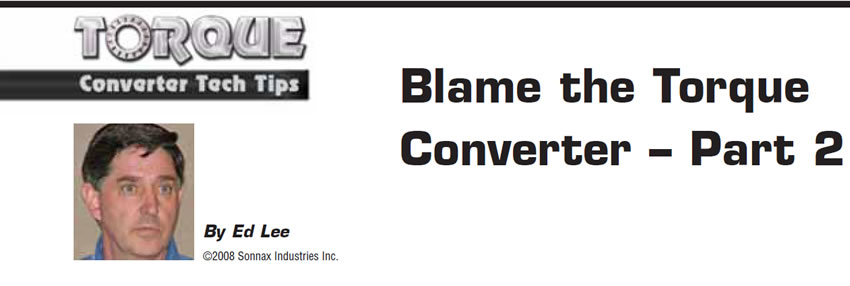
Blame the Torque Converter – Part 1
Society often influences us to try to blame others for our problems. From an early age we try to place blame with friends or siblings. Our training usually continues into our school age, when the guilty person is always “the other guy.” It seems only natural for this mindset to continue into the workplace. This is especially true if your workplace happens to be with the automatic-transmission industry. The mysterious inside of a sealed torque converter is easily substituted for the “big dumb kid” in the back of the classroom. The following are examples of a torque converter being unjustly blamed for a transmission problem.
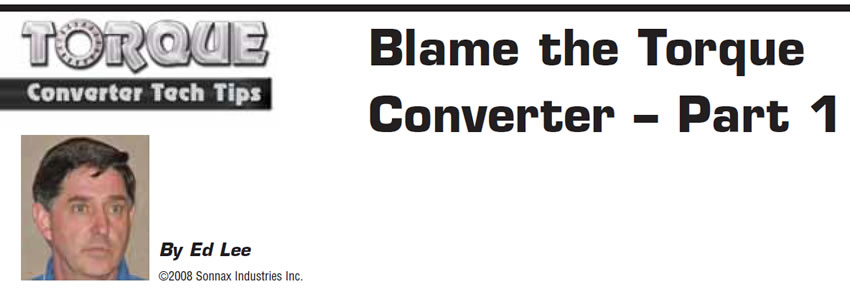
Rebuilding the Chrysler 68RFE Torque Converter
Along with this new transmission came a new torque converter, manufactured by ZF Sachs. The converter may look somewhat similar to its predecessor, but, as they say, looks can be deceiving. The stator in the 68RFE converter is the same type that was used in the 47-48 RE converters, but that is where the similarities end. The turbine looks as if it is the same as the earlier models, but appearance is all they have in common.
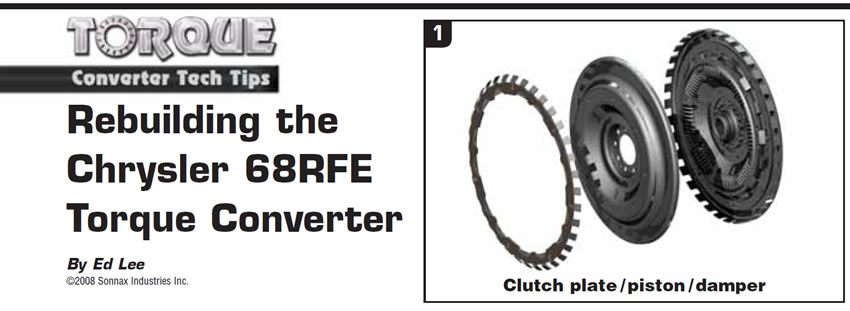
Solving the Mystery of Stator-Cap Wear
At this point most engineers were assuming that the stator-cap material needed to be upgraded, and that is where they focused their research. However, we all know what assuming does.

Fine-Tuning the Bonding Process
In a torque converter the friction material most often used on a lockup piston or cover is a mix of fibrous materials in a phenolic resin. The adhesive used to bond this material to steel is also phenolic based. Phenolic is a thermo-set type of plastic, and this plastic has unique properties.
